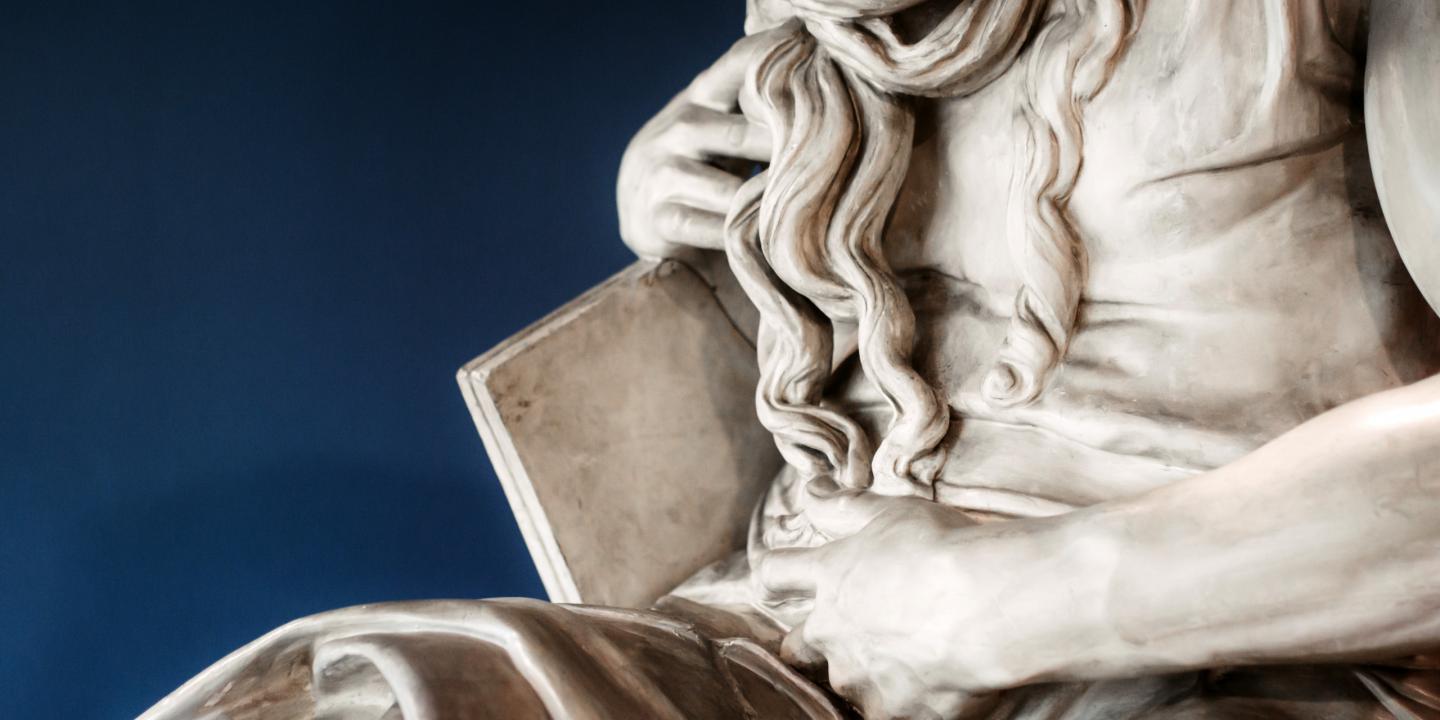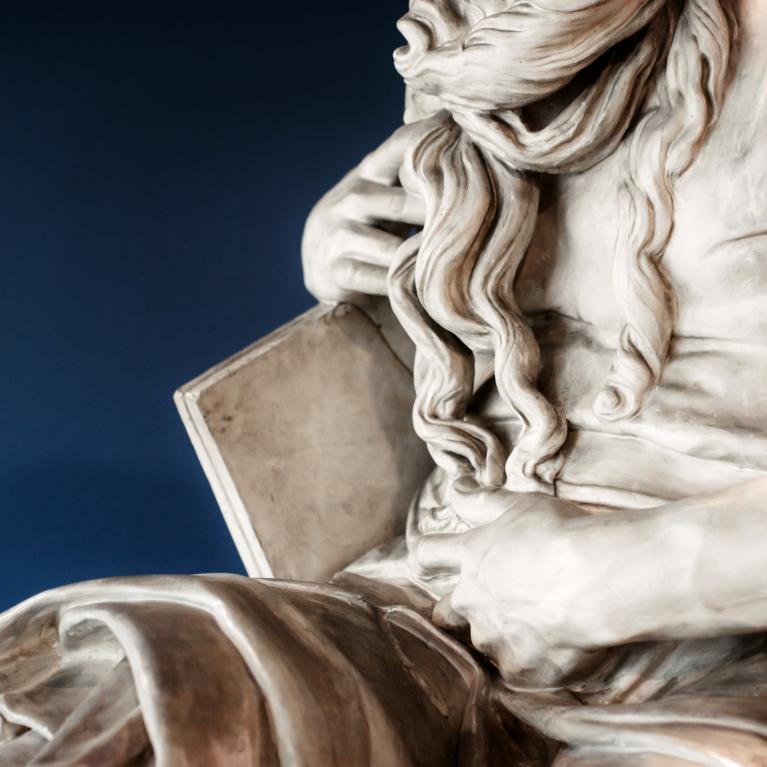Scientific lectures: Authenticity in museum collections. Experience, critique and future perspectives
Marking the 4th anniversary of the Antique and Renaissance Plaster Cast Exhibition "Forest of Sculptures", on October 31 and November 1, an international series of scientific lectures on authenticity and originality in various fields of art will be organised at the Art Museum RIGA BOURSE.
Authenticity and originality are among the most important basic principles in museum collections. Authentic – one that corresponds to the original, one that is based on a primary source, unquestionable, indisputable, accurate, reliable, genuine, proven. The original is given a sacred value, while the copies are valued as secondary, as they often have no direct connection to a specific cultural heritage, yet they are still used in museums as material in teaching contexts and as a framework for creating a certain context. Therefore these lectures aim to explore the connections between authenticity and various forms of cultural heritage. Exploring these interconnections offers an opportunity to reflect on our relationship with culturalhistorical memory, belonging and identity, which interact with social, political, aesthetic and ethical dimensions. The scientific lectures are part of the cooperation of the permanent Antique and Renaissance Plaster cast collection exhibition "Forest of Sculptures" with foreign and domestic researchers, aware of the importance and versatility of the theme of authenticity in the contexts of casts, contemporary art, graphics and architecture.
Conference programme
Thursday, October 31st, 2024
Art Museum RIGA BOURSE, 6 Dome Square, Riga
Lectures in English with simultaneous translation into Latvian
Participant registration
9.30–10.00
Registration
10.00–10.15
Opening and introduction
Mag. Art. Mare Heimrāte-Patačīni, Curator of the Foreign Arts Department of the Latvian National Museum of Art
10.15–11.15
‘The View of the One Illuminates the Other’ – Casts of Ancient Sculpture and Contemporary Art
Dr. Lorenz Winkler-Horaček, classical archaeologist, curator, professor and manager of the exhibition of the collection of ancient casts at the Free University of Berlin
As one of the first places of its kind, the Cast Collection of Ancient Sculpture at Freie Universität Berlin confronted its casts of ancient sculptures with modern art. Since the reopening of the Berlin collection in 1988, over 120 presentations, installations and events with contemporary artists and photographers have taken place alongside the archaeological exhibitions and projects. The aim has always been to take a fresh look at the casts themselves. Because every change sharpens the perception of what can always be seen. This creative approach to antiquity and modernity, to copy and original, was by no means a matter of course in the 20th century. From the Renaissance until the end of the 19th century, casts of antique sculptures in particular were regarded as normative models for contemporary artists and formed an integral part of art academies. However, in the 20th century they were sometimes radically rejected by artists and art historians. As an expression of an outdated educational ideal and as lifeless copies they were insulted and smashed – the aura of the artist was now only seen in originals. Almost all art academies in (Western) Europe ‘got rid’ of the casts. Instead, they assumed a symbolic function for the overcoming of the supposedly eternal yesterday.
Today, the casts are ‘liberated’ from ideologically charged ideas. This allows us to see them for what they are: Important tools for research and teaching in archaeology and art history, as well as excellent means for modern art to engage with the past. The presentation illustrates the history of this relationship between artists and casts and shows examples of projects from the Berlin Cast Collection.
11.15–12.00
Authenticity in contemporary art, is it possible?
Mag. Art. Astrīda Rogule, Curator of the Contemporary Art Collection at the Latvian National Museum of Art
Contemporary art breaks from modernism and creates a massive shift towards conceptual art, new media, and interdisciplinary approaches.
The main concept of authenticity for a contemporary artist is based on topicality and immediate response and reflection of our rapidly changing world. A contemporary artist ignores or does not care the strictly defined and framed media, but blurs lines between disciplines and challenges traditional notions of what art can be. Even more – one artwork could be made from different materials and contain different media. The concept and content of an artwork have been emphasised by every possible way of the artistic/or nonartistic means.
For an institution dealing with collecting, preservation, interpretation, and communication of the contemporary art, first, a contemporary art museum it has become a challenge to do all the mentioned functions with a strong respect to authenticity.
The museum specialists have to reconsider a bunch of issues connected with main museum functions starting with acquisition of the artworks, their documentation, interpretation, exhibiting and preservation to be appreciated by future generations. If the museums have created theories and traditional practices for so called traditional visual art as painting, graphic art, drawing, sculpture, etc., the contemporary art specialists are facing continues, never-ending, and unpredictable challenges.
12.00–12.30
Coffee break
12.30–13.30
Reconstructions between archaeological documentation, aesthetic experience and the quest for historical authenticity
Dr. Katharina Mann, art historian, artist and reasercher of sculpture polychromy
In the last years, reconstructions have become a popular tool for presenting archaeological finds in an aesthetically attractive way to reflect their so-called historical authenticity. But what does historical authenticity mean in relation to many unresolved questions and conclusions based only on rudiments that have been found? This is particularly evident with colour reconstructions of antique sculptures, whose colourful painting has been lost over the centuries due to the fragility of binders and pigments, and with it often their aesthetic expression as well as their identity. Since the rediscovery of ancient sculptures in the Renaissance, an (art) historical misunderstanding has grown up that runs counter to the original aesthetic meaning of colour and form as a unit, as there is hardly any evidence of the original painting of the sculptures. Although we know for a long time that antiquity never existed in this monochrome white version as we present it in museums, this illustrates an elementary problem of our quest of historical authenticity. For even if the colour and therefore the final result seen by the viewers of antiquity is definitively lost, the only thing we can call historically authentic is the form sculpted in stone that the viewers of the time never saw in this way. What must or can reconstructions be able to do and how can this mediation tool be used without creating new historical misunderstandings? And how can AI help? Such questions and suggestions on the ethical problems of reconstructions will be outlined and commented on in the lecture.
Friday, November 1st, 2024
Art Museum RIGA BOURSE, 6 Dome Square, Riga
Lectures in Latvian
Participant registration
9.30–10.00
Registration
10.00–10.45
Really Rembrandt? Rembrandt van Rijn (1606– 1669) in the Foreign Graphics Collection of the Latvian National Museum of Art
Dr. Daiga Upeniece, Head of the Art Museum RIGA BOURSE
10.45–11.30
Originality and Authenticity in Graphic Art
Prof. Guntars Sietiņš, Head of the Department of Graphic Art at the Art Academy of Latvia
The definition of original graphics, also called the Vienna definition, was adopted at the 3rd International Congress of Plastic Arts in Vienna in 1960, prepared by the British Association of graphic artists, sculptors and painters. However, nowadays this definition has partially lost its meaning, as new technologies and technical techniques have entered printed graphics, expanding the very first definition of original graphics.
In the lecture we will learn what an original graphic is, what rules must be followed when signing works, what is a copy, how to certify the authenticity of your work and how the value of the work is determined. We will discuss the definition of an original graphic, its circulation or limited circulation, as well as signing and numbering of a printed work. Furthermore, we will discover what are sample drafts and their designations, and finally the lecture will give an insight what is a certificate of authenticity and what it proves.
11.30–12.15
The problem of interpretation and renovation of antique samples in the facades of buildings of the turn of the 19th and 20th centuries in Riga
Dr. Silvija Grosa, art historian and a professor at the Latvian Academy of Arts
Historical architecture and construction form the fabric of every city in its uniqueness and cultural-historical significance. The historical center of Riga with the well-preserved structure of the city from the Middle Ages and later centuries, 19th century wooden construction and the impressive number of buildings of the Art Nouveau period have been included in the UNESCO World Heritage List since 1997 marking its universal value. Important buildings of the turn of the 19th and 20th centuries are also located outside the historical center of the city, far from the former suburbs of Riga. However, the main value is not the quantity, but the artistic quality and diversity of the decoration of the facades of these buildings, the architects' orientation to a wide range of stylistic currents. One of them is related to the free interpretations of antique themes and patterns, which form a sufficiently large part of the decoration of the facades. Some examples will be discussed in the lecture.
The heritage of Art Nouveau architecture and decorative art in Latvia was negatively evaluated until the 70s of the last century. Neglect of it, as well as the narrowness of life during the years of Soviet occupation, led Riga's once magnificent houses to superficial and brutal interior renovations and the loss of interior decoration. However, social poverty and the characteristics of collective management protected the buildings from demolition, unlike several cities in the Western world. After regaining independence, and especially in recent years, many houses in Riga are being renovated. However, these renovations, which are increasingly affecting Riga’s houses, cause concern about the conformity of the materials used in the facades to the original solution of the decor, because often the subtle nuances that made this decor so special are lost behind the perfect and dense coating of the paint layer.
Lectures are supported by the State Culture Capital Foundation.


